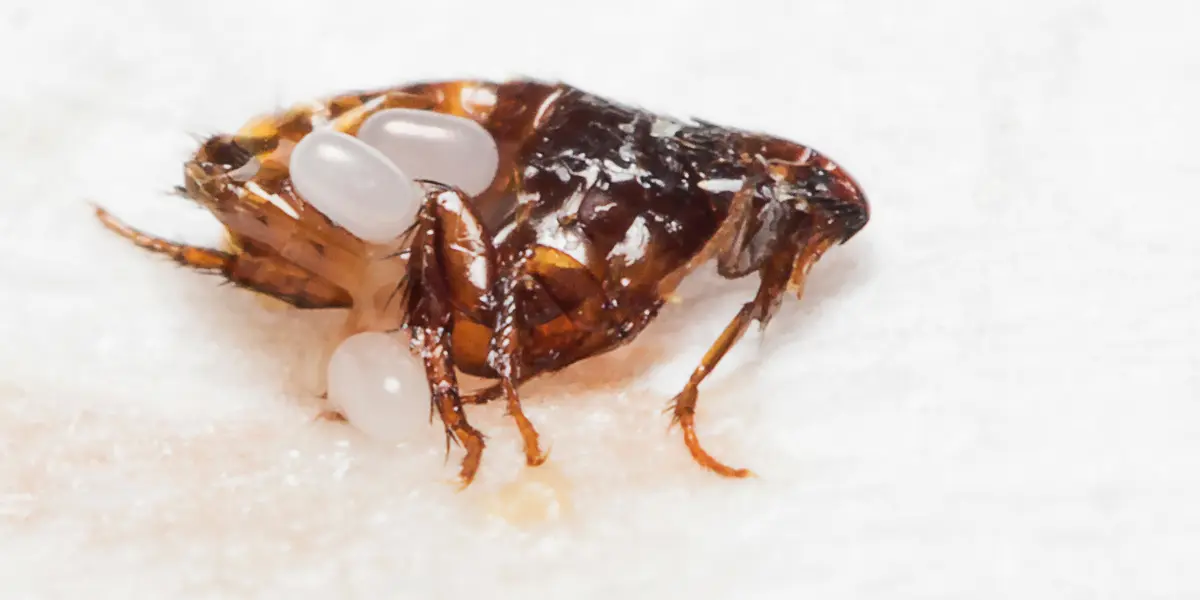Handling fleas may be one of the most annoying pest issues for both homeowners and pet owners. Many individuals wonder how fleas may remain or come back soon after treatment has been administered. The truth is, flea problems after treatment are more common than most realize. Fleas are tough pests with a complicated life cycle, and unless each stage is dealt with, infestations can easily be reinfested.
Understanding the Flea Life Cycle
The secret behind the recurrence of flea infestations is to know how the pests develop. There are four stages of fleas: egg, larva, pupa, and adult. The eggs and larvae can survive in carpet, bedding, or furniture, and most treatments only work on the adult fleas. Once those eggs hatch, it can seem like the treatment was not successful when in reality it just killed the adults that we saw. This is one of the primary reasons why flea problems after treatment often occur.
Eggs Hidden in the Environment
Flea eggs can hardly be seen. They are dropped on pets but soon spread to carpets, pet bedding, upholstery, and flooring cracks. In relation to humidity and temperature, they may hatch in a few days or go into hibernation. This implies that when one treats the dogs or cats with the best flea treatment, other fleas can still develop in the environment, repeating the infestation.
Improper Application of Treatments
The second cause of flea issues is improper product usage. Dogs and cats need to receive flea treatment as indicated to ensure behavioral changes. Any missed dose, applied too soon or not regularly, creates some gaps upon which the fleas can capitalize. Pets who are bathed shortly after topical treatments may also end up losing the effect of the medicine.
Resistance to Treatments
Just like other pests, fleas can develop resistance to certain chemicals over time. If a product has been used repeatedly, it may no longer be as effective. Switching to a different formula or consulting a veterinarian about the best flea treatment for dogs or cats may be necessary. In some cases, incorporating natural flea and tick prevention for dogs alongside standard treatments can help reduce reliance on chemicals while still keeping pets protected.
Overlooking the Home Environment
Fleas do not just live on pets. They thrive in the home environment, particularly in soft furnishings, carpets, and hidden cracks. Without thorough cleaning, flea treatment for house infestations is incomplete. Vacuuming carpets, washing pet bedding, and cleaning upholstery are critical steps. Professional flea pest control services are often needed for severe cases where DIY methods cannot fully eliminate the infestation.
Pets That Roam Outdoors
Pets that spend time outdoors are at higher risk of re-infestation. Fleas can jump from grass, soil, or wildlife onto your pet, reintroducing the problem. Even after an effective treatment, dogs and cats can pick up new fleas on daily walks or in the backyard. Using long-lasting products or natural flea and tick prevention for dogs can help reduce reinfestation risks.
Multiple Pets in the Household
If there are several pets in the home and not all of them are treated, fleas will continue to thrive. Treating only one dog or cat allows fleas to survive on the untreated animals and eventually spread back. Ensuring every pet receives the proper flea treatment is essential for breaking the cycle.
Why Professional Help Matters
Persistent flea problems after treatment may indicate a larger infestation that has spread beyond pets into the home. Professional flea control langley services can provide integrated solutions that target every stage of the flea life cycle, ensuring long-term relief. They combine advanced treatments with recommendations for home cleaning and pet care, reducing the chance of recurrence.
Conclusion
Flea infestations are not easy to eliminate, and it is common for flea problems after treatment to reappear if certain steps are missed. From hidden eggs and improper product use to reinfestation from outdoors, several factors can contribute to recurring issues. A combination of consistent pet care, thorough cleaning, and professional support is often the most effective way to achieve lasting results. By addressing both your pets and the home environment, you can finally put an end to recurring flea infestations.
Frequently Asked Questions
1. Why do fleas come back after treatment?
Fleas often return because eggs and larvae in the environment are not killed by most treatments. Once they develop into adults, it may look like the infestation has come back.
2. How long does it take for flea treatment to work?
Most treatments start killing adult fleas within 24 hours, but it can take weeks to fully eliminate all life stages. Regular reapplication and environmental cleaning are crucial.
3. What is the best flea treatment for dogs and cats?
The best option depends on your pet’s health, lifestyle, and sensitivity. A veterinarian can recommend effective flea treatment for dogs or flea treatment for cats tailored to your situation.
4. Can fleas infest my home even if I treat my pets?
Yes. Flea eggs and larvae in carpets, bedding, and upholstery can survive and continue the cycle, making flea treatment for house cleaning just as important as treating pets.
5. When should I call a professional for flea control?
If you have repeated flea problems after treatment or the infestation has spread throughout your home, professional flea pest control is recommended for complete elimination.




